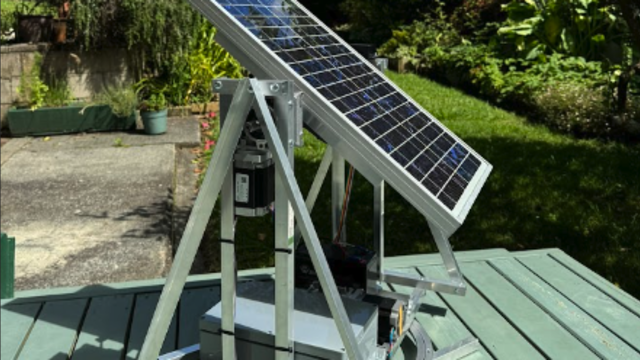Zooming in
We’d love to be able to say exactly what the highest magnification was in terms of pixels per mm – however, we weren’t actually able to take in-focus images at the highest (or even nearly the highest) magnification. There are a few fairly major design flaws that mean that this just doesn’t work at a high magnification scope. The lens moves through the ring of LEDs providing illumination. As you zoom in, the lens moves from behind this ring to quite a long way in front. As you reach higher magnifications, the area that the microscope is actually magnifying is in shadow, and just black. Even with a second light source, we weren’t able to properly illuminate the image at high magnifications.

The second major design flaw is that the stand is too flimsy to hold the device still enough to actually capture clear images at this level of magnification.
The high magnification, then, is more or less irrelevant, unless you’re planning on building your own stand with lighting. However, there are loads of areas where microscopes can be useful at much lower magnifications.
There are two physical set-ups which do work, at least to some extent. The first is at low magnification in the provided stand (the lowest magnification is marked at 40×, though claimed on the website to be 50×, and we found that it worked out at 400 pixels per mm).
The set-up here doesn’t look awful for, say soldering, but in practice, it’s difficult to use. The light stand is very sensitive to knocks and vibrations and, as it’s not stereoscopic, you don’t get any sense of depth. In short, it’s not particularly easy to work in this set-up, but will do just fine for taking images and investigating objects up-close.
The second physical set-up is where the transparent plastic end is pressed directly onto the object you’re looking to image, and the zoom is adjusted until it’s in focus. This gives quite a high level of magnification (about 1600 pixels per mm) which works out as about 300× on our laptop screen. This set-up works well for investigating objects, particularly as this can be used in a wide range of physical orientations. The microscope can easily inspect something vertical, upside down, or in a tricky place. For this use, it’s actually quite effective. The unit itself is easy to hold and manoeuvre with one hand, and the 1.5 m USB cable gives enough slack for moving around. At less than 10 cm long and 3.5 cm wide, it’s small enough to fit into a lot of tight spaces where better and more expensive microscopes simply couldn’t go. This could save a lot of time by, for example, inspecting a PCB without having to remove it from its housing.
Up close and personal
The device connects over USB and works as a webcam. This does open up the interesting possibility of controlling it via software which may allow, for example, time-lapse photography of something small-growing – though this would probably need a more solid stand than the one provided. The microscope worked without drivers straight away for us on both Windows and Linux environments.
Ultimately, our USB microscope is an interesting toy – and a great way of satisfying our curiosity for finding out what things look like up-close – and it’s priced accordingly. £12 is a pretty reasonable price for something that allows you to poke, prod, and investigate small things. If you’re hoping that this is a reasonable alternative to a serious scope for any kind of close-up work, you’ll be sorely disappointed. For that, you’ll need better optics and a better physical set-up – both of which come with a higher price tag.







